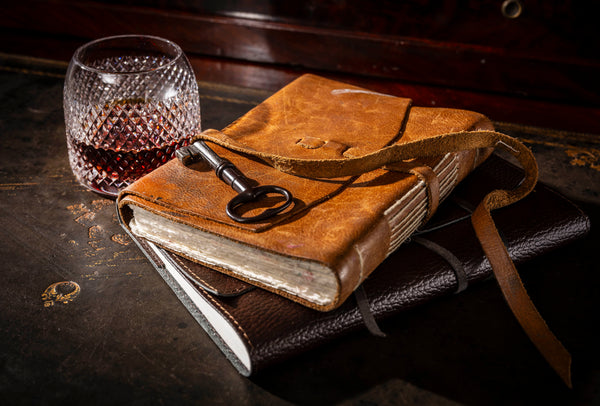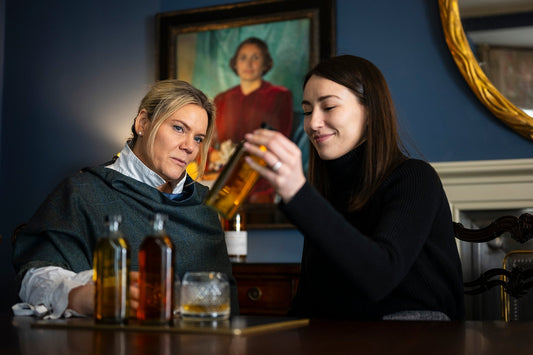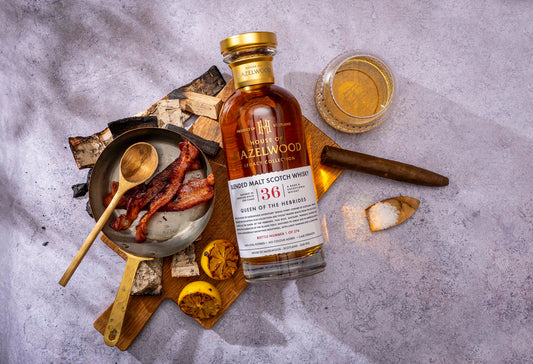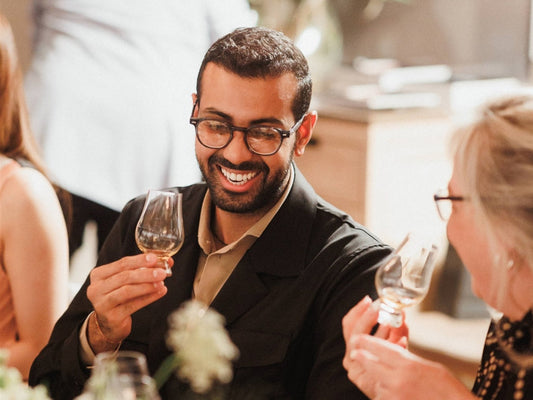Old and rare whisky - it is the last chance to sip history before it disappears forever. We explore the whisky making techniques behind Blended at Birth and the extinction of old practices.
Since the birth of whisky, first referenced in the Scottish Exchequer Rolls of 1494, the techniques, criteria, and laws surrounding its production have evolved markedly – to such an extent that much of the old and rare whisky of the past wouldn’t even be considered whisky by today’s standards.
Of course, from its origins as a treasured luxury in isolated communities to its status today at the centre of a multi-billion-pound international industry – whisky’s journey has been a complex one.
Shaped by cultural shifts, industrial development, and globalisation, both lawmakers and distillers have sought to keep up with the quickly changing times to protect Scotch Whisky’s cherished status, with varying levels of success.
Here, we will look at how the development of the law has led to Blended at Birth, a 1965 Blended Scotch Whisky from the Charles Gordon range, becoming one of the rarest and most precious bottles in our inventory.

The Changing Regulations Surrounding Old and Rare Whisky
From the largely unsuccessful introduction of the first taxes on Scotch in 1644, through the Excise Act of 1823, to today’s detailed criteria and protections – laws and regulations have been introduced in Scotland over the centuries to protect the crown jewel of its cultural heritage.
Throughout the course of these legal changes and cultural shifts, whisky’s dedicated distillers and producers have adapted – working both against and in tandem with lawmakers at different stages.
Early attempts at taxation simply forced Scotch Whisky production underground, leading to a huge rise in smuggling. While The Excise Act offered the first glimpses of what the industry could become (with producers allowed to keep distilling whisky for a £10 licence fee and predefined payment per gallon of proof spirit), distilleries were still free to ferment, distil, and sell their products as they pleased, with the specific characteristics of their spirits largely uncontrolled.
Throughout this time, regulations possessed a purely financial focus, with whisky classified as almost any alcoholic liquid resulting from the process of fermenting grains and water, distilling the resulting liquid, and ageing it in barrels.
It was only in the 20th Century that a regulated legal framework surrounding the production of Scotch Whisky was introduced with any real effect or impact on the product itself.
Initially introduced with a dedicated Scotch Whisky Act in 1988 and strengthened by new Scotch Whisky Regulations in 2009, these laws sought to protect the consumer and establish a common standard of quality and safety across the industry.
The current legislation (at the time of writing) stipulates that Scotch Whisky must meet the following criteria:
· Made in Scotland from only cereals (or just barley for malts), water and yeast.
· Matured for a minimum of three years and one day in oak casks.
· Bottled at a minimum alcoholic strength of 40% ABV.
· Distilled below 94.8% ABV so that it retains the flavour and aroma derived from its raw materials.
· No flavouring or sweetening is permitted.
(Scotch Whisky Association, 2023)
Through the establishment of these standards, we have a turning point in the history of Scotch Whisky. A fixed moment in its otherwise unsettled story. One that sees our protagonist, Blended at Birth, emerge as one of the final expressions of a now-outlawed practice.
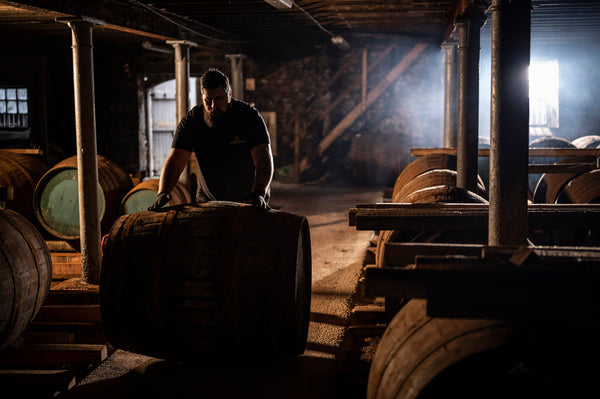
Old and Rare Whisky - From New Make to Never Again
Distilled in 1965, the malt and grain components of Blended at Birth were themselves distilled as New Make spirit.
This term, New Make, refers to the high-proof, colourless, unaged spirit that is produced during the first distillation of the mash. Today, this New Make spirit is legally required to mature in oak casks for three years before any blending takes place – however, in the case of Blended at Birth, the spirit from both malt and grain components were married together prior to ageing.
As a result, the two spirits have aged together as one in cask, maturing for 56 years in ex-bourbon American oak.
This technique, now forbidden under Scotch Whisky law, has resulted in a wonderfully unified blend where its textural elements, flavours, and structure are interwoven.
Notes of tropical fruits and floral scents are first apparent on the nose. While on the palate, a silky sweet texture provides the foundation for notes of caramel and fudge. An indulgent scented crispness concludes the experience, leaving a tart, dry finish.
“An extraordinary whisky that surpasses my expectations. And really, it's quite unlike any whisky I've ever tasted”, Thijs Klaverstijn, Words of Whisky
Owing to these now extinct production techniques, Blended at Birth provides an extraordinarily unique experience for even the most seasoned whisky enthusiasts. One in which the grain is inseparable from malt, the cask influences bright and balanced, and the slow passage of time richly expressed.
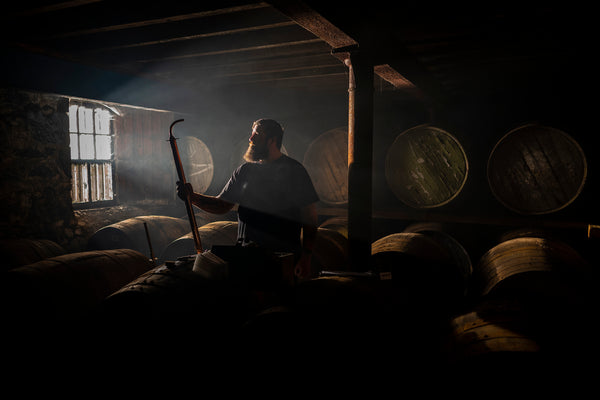
Blended at Birth - The Final Beacon of a Bygone Era
Aside from this unique flavour profile and character, the true appeal of Blended at Birth perhaps lies in its position within the context of whisky’s long story.
Tighter laws and more stringent quality controls have undoubtedly provided customer-confidence, enhanced global trade, and established a better commercial environment for the Scotch Whisky industry as a whole. And yet, one could argue they have also led to a degree of homogenisation in whisky production since their introduction.
Variety may have surfaced previously through differing techniques, mistakes, creativity, or coincidence – whereas today, this diversity has been somewhat diluted by a standardisation of practices.
Specialist blenders, such as House of Hazelwood, will continue to offer a chance to capture whisky’s magic but ephemeral standouts like Blended at Birth will nonetheless never be seen again.
Not only one of the first whiskies to be blended at birth, but also one of the last – 192 bottles of warm bronze Blended Scotch are all that exist of this now extinct practice.
Blended at Birth has thus been elevated to an esteemed status as the final beacon of a bygone era.
